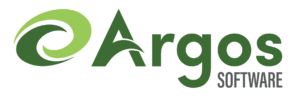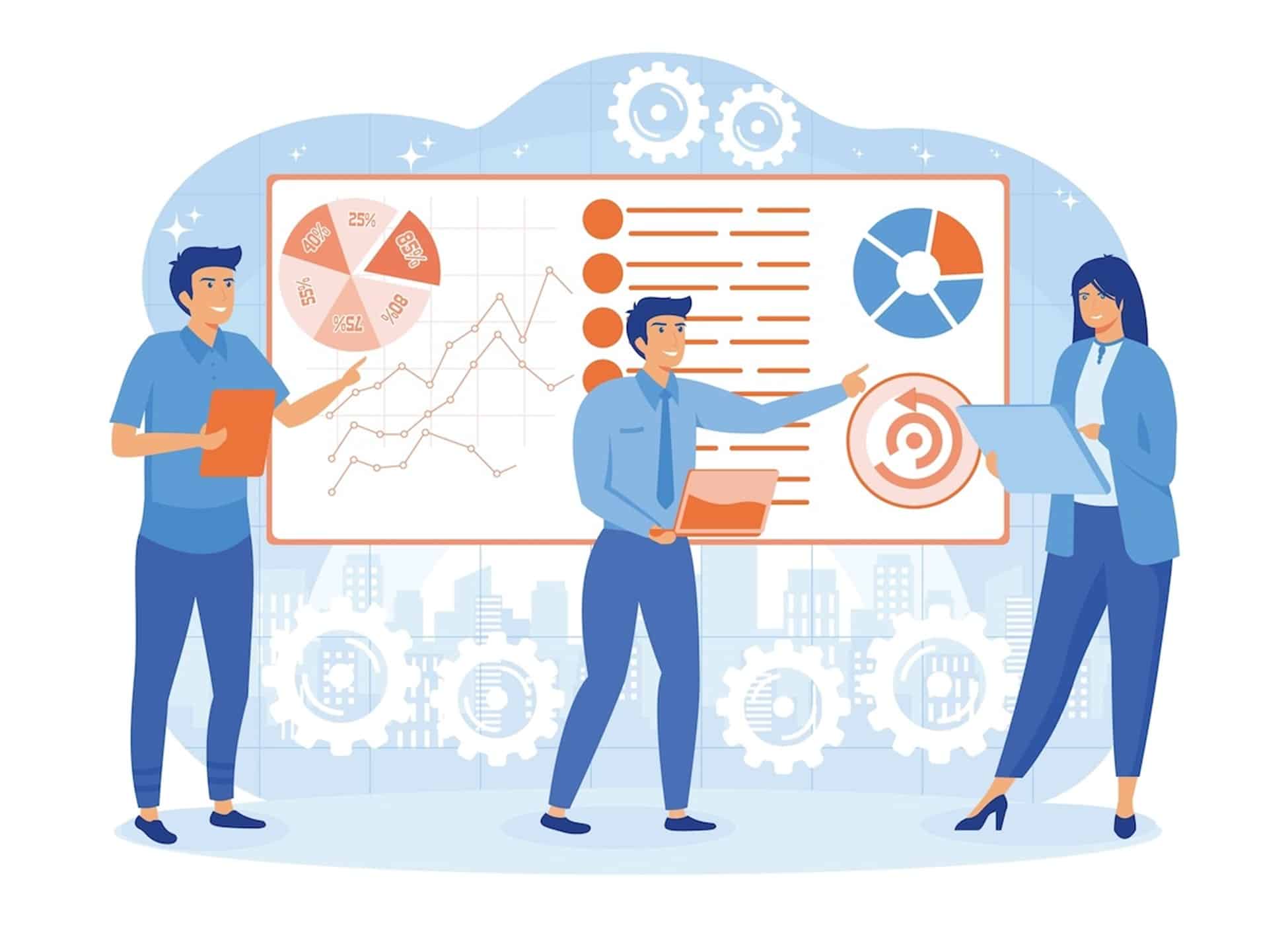
In today’s rapidly evolving business landscape, the efficient management of both physical and infrastructure assets stands as a cornerstone of operational success. Business asset management, a discipline that extends beyond the financial management of stocks and bonds, encompasses the strategic oversight of all valuable resources within an organization. This broad spectrum includes everything from tangible machinery and facilities to intangible assets like software and intellectual property. Effective management of these assets is crucial, not only for safeguarding them but also for optimizing their use to drive business growth and performance.
The significance of both physical asset management and infrastructure asset management cannot be overstated. As businesses across various sectors grow and integrate advanced technologies, the assets they rely upon become increasingly sophisticated and interconnected. This complex web of assets presents a challenge: ensuring they contribute positively to the bottom line through a comprehensive strategy that goes beyond mere inventory or maintenance. It involves creating a robust system where assets are monitored and managed from procurement through to disposal, thus ensuring they deliver maximum possible value throughout their lifecycle.
This guide aims to provide professionals across all industries with the insights and strategies necessary to excel in asset management. By adopting a holistic approach to the management of both tangible and intangible assets, organizations can unlock new levels of efficiency, sustainability, and competitive advantage. Whether you are in logistics, manufacturing, tech, or any field in between, mastering the principles of asset management is key to navigating the complexities of today’s business environment and securing a prosperous future.
Understanding the Basics of Asset Management
What is Asset Management?
At its core, asset management is the holistic approach to overseeing every asset within an organization to maximize value and minimize costs and risks. These include both physical or tangible fixed assets and non-physical, or intangible assets. This practice differs significantly from personal or financial asset management, focusing instead on the tangible and intangible assets that drive business operations forward. It involves a strategic blend of procurement, utilization, maintenance, and disposal to ensure each asset’s optimal performance and contribution to the business goals.
Types of Assets
A thorough understanding of the various types of assets under management is essential for developing and implementing effective asset management strategies. Generally, assets can be categorized into three broad groups: physical and infrastructure assets, intangible assets, and digital assets. Here’s a closer look at each category:
- Physical and Infrastructure Assets: These assets are tangible and are often referred to as fixed assets. This means they have a physical presence and are utilized by businesses to generate value. They include:
- Machinery and Equipment: Essential for manufacturing processes, maintenance work, and more.
- Vehicles and Fleets: Used for transportation, logistics, and delivery services.
- Buildings and Facilities: Encompasses office spaces, warehouses, and manufacturing facilities.
- Infrastructure: This subcategory includes the vital systems and structures that support a company’s operations, such as power grids, water and sewage systems, and communication networks. Infrastructure assets are crucial for both public services and private sector operations, requiring comprehensive management and strategic planning to ensure their reliability and efficiency.
- Intangible Assets: Despite lacking a physical form, intangible assets are critical to a business’s competitive edge and market success. They include:
- Software Licenses and Patents: Protect and provide exclusive rights to use innovative technologies and processes.
- Trademarks and Brand Recognition: Crucial for marketing, customer recognition, and establishing a reputable brand identity.
- Intellectual Property: Encompasses proprietary research, designs, and creative work. Managing these assets involves legal protections, licensing agreements, and strategic deployment to safeguard and leverage their value.
- Digital Assets: With the digital transformation of businesses, managing digital assets has become a separate focus area. These assets include:
- Data and Information: Customer databases, analytical reports, and operational data that drive decision-making and strategic planning.
- Digital Content: Marketing materials, digital products, and online content that require management for copyright, distribution, and monetization.
By recognizing the diverse nature of assets, businesses can tailor their asset management strategies to address the unique challenges and opportunities each type of asset presents. Effective asset management ensures that physical, infrastructure, intangible, and digital assets are not only protected but also optimally utilized to contribute to business growth and sustainability.

Core Components of Effective Asset Management
Asset Inventory and Documentation
One of the first steps toward achieving effective asset management is establishing a comprehensive asset inventory and maintaining detailed documentation. This process involves creating a systematic record of every asset owned by the business, including both tangible or fixed assets, and intangible assets. For tangible assets, this would encompass details such as serial numbers, purchase dates, costs, and current locations. For intangible assets, it includes licenses, patents, and copyrights, along with their acquisition dates and values.
The importance of maintaining this inventory cannot be understated. It serves as the backbone of any asset management strategy, enabling businesses to track the status and performance of their assets throughout their lifecycle. Additionally, well-kept documentation aids in compliance with regulatory standards, financial reporting, and strategic planning. It also simplifies the process of asset verification, valuation, and insurance.
Asset Tracking
In today’s digital age, the methodologies for tracking physical and digital assets have evolved significantly. Beyond traditional barcode systems and RFID tags, businesses now leverage GPS trackers, IoT sensors, and cloud-based software platforms for real-time asset monitoring. These technologies provide instant visibility into the location, condition, and performance of assets, facilitating proactive management.
Real-time asset tracking allows businesses to respond swiftly to changes in asset status, reducing downtime and preventing losses due to theft or misplacement. Moreover, integrating this data with asset management software can automate maintenance schedules, update asset records, and inform decision-making processes. For digital assets, software solutions can monitor usage, ensure compliance with licensing agreements, and protect intellectual property rights.
Lifecycle Management
Understanding and managing the lifecycle of an asset is central to maximizing its value and efficiency. Lifecycle management, whether for physical or infrastructure assets, or intangible assets, encompasses the stages from asset acquisition, through its operational use, to its eventual disposal or renewal. By strategically managing each phase, businesses can extend asset life, optimize their use, and ensure their assets remain a source of value rather than a cost burden.
- Acquisition: Making informed decisions about which assets to acquire, considering not only the purchase price but also the total cost of ownership, including maintenance, operation, and potential resale value.
- Operation: Ensuring assets are utilized effectively, maintaining them in good working order, and making adjustments as business needs change.
- Maintenance: Implementing scheduled maintenance and adopting predictive maintenance strategies to prevent failures and extend asset lifespan.
- Disposal or Renewal: Deciding when it’s more cost-effective to retire an asset and replace it, considering its residual value, the cost of continued maintenance, and the benefits of newer technology.
Maintenance Scheduling and Management
Regular maintenance is critical to extending the lifespan of assets, ensuring they perform efficiently and reducing the likelihood of unexpected breakdowns. Advanced techniques in maintenance scheduling, such as predictive maintenance, leverage data analytics and IoT sensors to anticipate failures before they occur, scheduling interventions only when necessary.
Choosing between in-house and outsourced maintenance involves weighing the cost and expertise associated with each option. While in-house teams provide control and rapid response, outsourced partners can offer specialized skills and scalability. Whichever choice is made, it’s essential to integrate maintenance activities into the broader asset management strategy, ensuring they contribute to overall business objectives and asset performance optimization.
In these sections, we’ve outlined the foundation of effective asset management, focusing on inventory documentation, tracking technologies, lifecycle strategies, and maintenance practices. As we move forward, we’ll explore additional aspects that contribute to a holistic asset management approach, including financial management, technological advancements, and strategic practices for risk management and compliance.

Depreciation Tracking and Financial Management
Depreciation tracking is a crucial component of managing fixed assets, allowing companies to understand the diminishing value of their tangible assets over time. This process is not just about compliance with accounting standards; it’s a strategic tool that informs decisions on asset maintenance, replacement, and disposal. By accurately tracking depreciation, businesses can ensure they’re making informed investment decisions, optimizing their tax benefits, and maintaining accurate financial records.
Financial management in asset management extends beyond depreciation tracking. It encompasses the total cost of ownership (TCO) analysis, investment planning, and the alignment of asset acquisition with financial goals and capabilities. Effective financial management ensures that assets are not only contributing to operational efficiency but also aligning with the company’s broader financial strategy, including budgeting, forecasting, and liquidity management.
Technology in Asset Management
In the realm of asset management, technology plays a pivotal role in enhancing the visibility, efficiency, and control of assets across various industries. The adoption of cloud-based software solutions marks a significant advancement, offering businesses the ability to centralize asset information, streamline processes, and facilitate real-time decision-making. These platforms are designed for scalability and provide remote access, ensuring that businesses can manage their assets effectively, regardless of their size or geographic distribution.
Moreover, the integration of Remote Access Technology (RAT) and other mobile solutions into asset management systems has revolutionized how field personnel, such as drivers and sales teams, interact with assets in real-time. This connectivity ensures that data is consistently updated and accessible, enhancing the responsiveness and agility of businesses in managing their assets.
For instance, systems like Argos Software utilize these technologies to offer comprehensive asset management solutions. By integrating e-mail and file export capabilities, along with the automatic generation and distribution of reports and documents, such platforms ensure seamless communication and efficiency. The ability to define alerts and receive automatic notifications helps businesses stay ahead of potential issues, enabling proactive management of assets.
Additionally, the integration of various external tools and services, including RF and handheld devices, further extends the capabilities of asset management systems. This interoperability allows for the efficient tracking and management of assets, reducing errors and improving overall operational efficiency.
The technology landscape in asset management continues to evolve, driven by the need for greater efficiency, accuracy, and control. As businesses strive to optimize their asset management practices, the adoption of advanced technological solutions remains a critical strategy for achieving operational excellence and competitive advantage.
Strategic Asset Management Practices
Risk Management
Identifying and mitigating risks associated with asset utilization and ownership is paramount in asset management. This includes physical risks to tangible and infrastructure assets, such as damage or theft, and operational risks, such as downtime due to unexpected failures. Effective risk management involves regular risk assessments, the implementation of preventive measures, and the development of contingency plans to ensure business continuity.
Policy and Compliance
Ensuring that asset management practices meet industry regulations and standards is critical for legal compliance and operational excellence. This encompasses everything from environmental regulations and safety standards to financial reporting requirements. Developing clear policies and procedures for asset management not only helps in meeting these requirements but also in standardizing practices across the organization, enhancing efficiency and accountability.
Performance Monitoring and Optimization
Monitoring the performance of assets and seeking ways to optimize their utilization is essential for maximizing return on investment. This involves regularly reviewing asset utilization rates, maintenance costs, and overall contribution to business goals. Performance data can inform strategic decisions on asset reallocation, upgrades, or divestment, ensuring that the asset portfolio remains aligned with changing business needs and market conditions.
Sustainability and Asset Management
Integrating sustainability into asset management practices is increasingly recognized as a key driver of long-term value creation. This includes considering the environmental impact of assets throughout their lifecycle, from acquisition to disposal. Sustainable asset management practices can reduce waste, lower energy consumption, and minimize the carbon footprint of operations, contributing to a company’s social responsibility goals and improving its reputation among consumers and investors.
The comprehensive approach outlined in these sections, from financial management and technology adoption to strategic practices and sustainability, forms the foundation of effective business asset management. As businesses continue to navigate a dynamic operational landscape, the principles and practices discussed here will be pivotal in leveraging assets as strategic tools for growth and competitive advantage.
Implementation and Best Practices
Implementing a robust asset management system requires careful planning, consistent execution, and continuous improvement. Here are key strategies and best practices to ensure the successful deployment and management of an effective asset management framework.
Assessing Your Current Asset Management Maturity
Understanding your organization’s current level of asset management maturity is crucial before embarking on any improvement initiative. This involves evaluating existing processes, technologies, and practices against industry standards or best practices. Tools like maturity models can help identify gaps in areas such as documentation, tracking, maintenance, and financial management, providing a clear roadmap for advancement.
Developing an Asset Management Plan
A strategic asset management plan (AMP) outlines how an organization’s assets will be managed to achieve its overall strategic plan. This plan should include:
- Goals and objectives for asset management.
- Roles and responsibilities within the asset management team.
- Standards and practices for asset acquisition, maintenance, and disposal.
- Strategies for risk management, compliance, and performance optimization.
- A technology roadmap for implementing or upgrading asset management tools and systems.
Change Management
Successfully implementing a new or revised asset management strategy often requires changes to organizational culture, processes, and technology. Effective change management strategies can facilitate this transition, ensuring buy-in from all stakeholders. Communicate the benefits of effective asset management clearly and consistently, provide training to relevant teams, and involve key stakeholders in the planning and implementation process to foster a culture of continuous improvement.
Training and Development
Investing in training and development is essential for building asset management competence within the organization. This includes both technical training on asset management tools and systems, and broader educational initiatives on best practices and principles. Regular training sessions can help ensure that staff are up to date with the latest asset management strategies, technologies, and regulatory requirements.
Leveraging Data and Analytics
In the era of big data, leveraging data analytics is a powerful strategy for optimizing asset management. Data collected from IoT devices, asset management software, and other sources can provide valuable insights into asset performance, maintenance needs, and utilization patterns. Analytics can help identify trends, predict failures, and inform strategic decision-making, enabling organizations to move from reactive to proactive asset management.
Choosing the Right Asset Management Software
Selecting the right asset management software is pivotal to enhancing operational efficiency and achieving strategic asset management goals. Key features to look for include:
- Compatibility with existing systems and technologies.
- Scalability to accommodate business growth.
- Real-time tracking and reporting capabilities.
- Customizable dashboards and reports.
- Support for predictive maintenance and analytics.
Challenges and Solutions in Asset Management
Common Challenges
Asset management teams often face challenges such as data silos, outdated systems, and resistance to change. These obstacles can hinder the effective tracking, management, and optimization of assets.
Solutions and Workarounds
To overcome these challenges, businesses can:
- Implement integrated asset management solutions to break down data silos.
- Regularly review and update asset management technologies and processes.
- Foster a culture of innovation and continuous improvement through training and change management practices.
The Future of Asset Management
Emerging Trends
Technological advancements such as artificial intelligence (AI), machine learning (ML), Internet of Things (IoT), and blockchain could further revolutionize asset management. These technologies offer potential new ways to track, manage, and optimize assets, driving efficiency and value creation.
Preparing for the Future
Staying ahead of emerging trends requires a proactive approach. Organizations should:
- Keep abreast of technological developments and industry best practices.
- Invest in technology and skills development.
- Experiment with new technologies on a small scale before full implementation.
Argos Software: Your Strategic Asset Management Solution
As businesses navigate the complexities of asset management, the need for a comprehensive, adaptable solution has never been more apparent. Argos Software, with its rich history of innovation and dedication to efficiency, presents a robust platform designed to streamline asset management across various industries. Our suite of features is not just a testament to our expertise but a reflection of our commitment to transforming the way businesses manage their assets.
Tailored Solutions Across Industries
Argos Software is engineered to cater to the unique challenges and dynamics of multiple sectors, including 3PL providers, agribusiness, transportation, and more. Each solution is meticulously designed with industry-specific functionalities to enhance operational efficiency and strategic decision-making.
- For 3PL Providers: Argos offers an end-to-end warehouse management solution, embracing advanced features like value-add transactions and storage billing, crucial for the complex demands of a 3PL environment.
- In Agribusiness: From seedling cultivation to stock management and shipping, Argos software provides comprehensive visibility and control, ensuring the seeds of hard work bear fruits of efficiency and productivity.
- Transportation and Freight Management: With features like advanced route optimization and real-time shipment tracking, Argos software is the ultimate tool for efficient logistics management.
Comprehensive Asset Management Features
Our Asset Management suite is a testament to our comprehensive approach, offering:
- Real-Time Asset Tracking and Visibility: Ensure every asset is precisely where it needs to be, when it needs to be there, with our advanced tracking solutions.
- Lifecycle Management: From procurement to disposal, maximize ROI with strategic insights into each asset’s journey.
- Maintenance Scheduling: Automate and optimize maintenance schedules to keep assets in peak condition, reducing unexpected breakdowns and extending asset lifespan.
- Depreciation Tracking: Stay ahead of financial planning with accurate, up-to-date depreciation records, aiding in strategic asset investment decisions.
- Customizable Dashboards and Reporting: Gain a holistic view of your asset portfolio with tailored operational insights, driving informed decision-making.
Why Choose Argos?
Choosing Argos Software means more than just accessing a top-tier asset management solution; it means partnering with a team that understands the nuances of your industry and the challenges you face. Our flexible, modular system allows you to tailor the software to your specific needs, ensuring that you only pay for what you need. Argos is committed to continuous improvement and innovation, ensuring our solutions evolve with your business.
Conclusion
In the ever-evolving world of business, effective asset management is not just a necessity but a strategic advantage. With Argos Software, businesses have a partner poised to elevate their asset management strategy, harnessing technology, industry expertise, and a commitment to excellence. As we look towards the future, Argos remains dedicated to empowering businesses with the solutions they need to manage their assets intelligently, efficiently, and profitably. Join us on this journey to redefine asset management and unlock the full potential of your business operations.
Request a Demo
Discover how Argos Software can transform your asset management practices, streamline your operations, and drive your business forward. Contact us today to request a demo and explore a partnership that grows with you, offering the tools and insights needed to excel in today’s competitive landscape.





